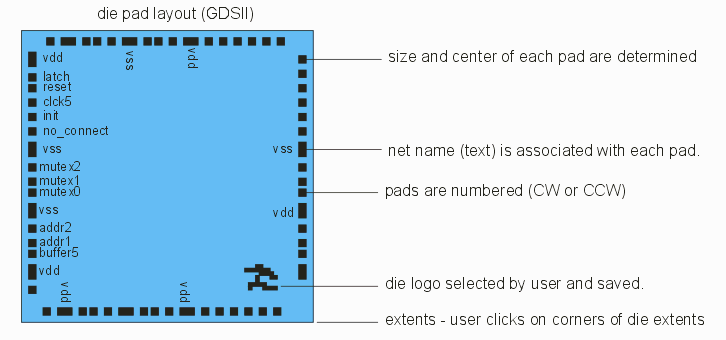Smart Die Plug In
The Smart Die Plug-In is used by chip and package designers to extract the die pad locations from a GDSII layout and output an ascii file. It runs inside of Artwork's Qkcvu3 layout viewer.

One of the first steps in designing an IC package is to create a table of chip pad locations, number each pad and associate each pad with a net or signal name. SmartDie can automate this process using a GDSII layout as input.
How it Works
SmartDie works by scanning the pad opening layer and identifying shapes that "look" like die pad openings. It can handle square, rectangular and polygonal die pad shapes and uses a statistical approach to differentiate a die pad from, say, a die outline or logo. It categorizes the shapes into pad stacks (many die have 2 or more differently shaped die openings) and finds their centers.

